Indian Society & Social Justice - 3 | Current Affairs & Hindu Analysis: Daily, Weekly & Monthly - UPSC PDF Download
| Table of contents |

|
| GQ-RCP Platform for HIV Detection |

|
| Impact of Covid-19 Pandemic |

|
| Rising Drug Abuse Among Youth |

|
| Misuse of Indian Law |

|
GQ-RCP Platform for HIV Detection
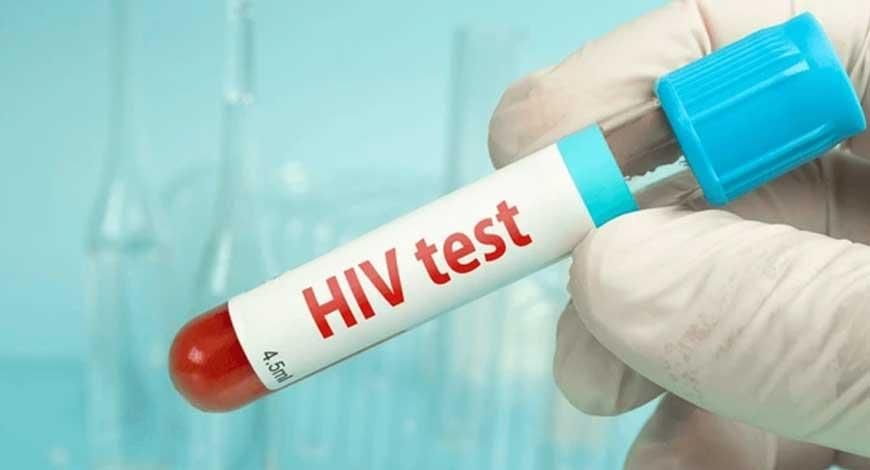 Why in News?
Why in News?
Recently, researchers at the Jawaharlal Nehru Centre for Advanced Scientific Research (JNCASR), an autonomous institute under the Department of Science and Technology, have developed a new technology for early and accurate detection of HIV. The GQ Topology-Targeted Reliable Conformational Polymorphism (GQ-RCP) platform, adapted from SARS-CoV-2 diagnostics, showcases the innovative capabilities of Indian research institutions.
Key Takeaways
- The GQ-RCP platform utilizes a unique G-Quadruplex (GQ) DNA structure for targeted detection of HIV.
- It enhances diagnostic reliability through a fluorometric test, significantly reducing false positives associated with HIV detection.
- The platform improves early detection capabilities, moving away from less specific general DNA sensing probes.
Additional Details
- G-Quadruplex (GQ) Structure: This four-stranded DNA conformation is crucial for various biological processes, including gene regulation and genome stability.
- The detection process involves reverse transcription amplification of a genomic segment, transitioning double-stranded DNA into its GQ conformation via a pH-mediated process.
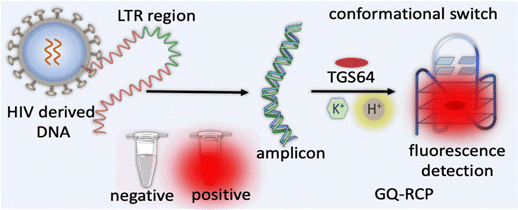
What is HIV?
About:
HIV stands for Human Immunodeficiency Virus, a virus that attacks the immune system in the human body. It primarily targets and damages CD4 immune cells, essential for fighting infections and diseases. Over time, HIV weakens the immune system, making the body vulnerable to opportunistic infections and cancers.
Transmission:
- HIV is primarily spread through the exchange of certain bodily fluids such as blood, semen, vaginal fluids, and breast milk.
Severity:
If left untreated, the virus can lead to Acquired Immunodeficiency Syndrome (AIDS), resulting in life-threatening opportunistic infections.
Cure:
While there is currently no cure for HIV, the disease can be managed effectively using antiretroviral therapy, which suppresses the virus's replication and allows CD4 immune cell counts to recover.
What is the State of HIV Infection in India?
Current Prevalence:
According to the National AIDS Control Organization (NACO), as of 2021, approximately 2.4 million people are living with HIV in India, with an adult prevalence rate of 0.22%. The India HIV Estimates 2021 report indicated a downward trend in new infections.
Demographic Distribution:
- The epidemic is concentrated among high-risk populations, including female sex workers (2.61%) and injecting drug users (5.91%).
- Children under 15 years account for about 3.5% of all infections, while women represent approximately 39% of the total HIV-positive population.
High-Prevalence States:
- The northeast region states have the highest adult HIV prevalence, with 2.70% in Mizoram, 1.36% in Nagaland, and 1.05% in Manipur.
- Southern states such as Andhra Pradesh (0.67%), Telangana (0.47%), and Karnataka (0.46%) also show significant prevalence.
- The largest number of People Living with HIV (PLHIV) is in southern states, with Maharashtra, Andhra Pradesh, and Karnataka being the top three.
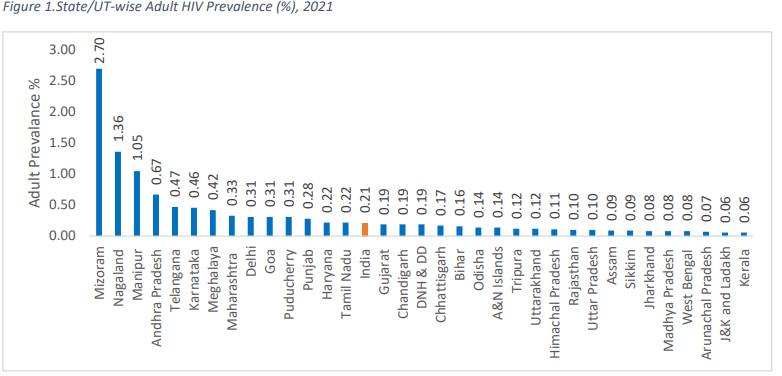
What are the Government Initiatives Related to HIV?
National AIDS Control Program (NACP):
Established shortly after the first AIDS case was reported in India in 1986, the NACP has evolved through multiple phases since its inception in 1992, focusing on prevention, treatment, and care for individuals living with HIV/AIDS.
Phases of NACP:
- Phase I (1992-1999): Focused on awareness generation, blood safety, and establishing surveillance systems.
- Phase II (1999-2006): Expanded targeted interventions for high-risk populations and involved NGOs in implementation.
- Phase III (2007-2012): Scaled up targeted interventions and strengthened surveillance, emphasizing partnerships with civil society organizations.
- Phase IV (2012-2021): Aimed to consolidate gains and integrate HIV services into the public health system, focusing on comprehensive care and support.
- Phase V (2021-2026): Aims to reduce new HIV infections and AIDS-related deaths by 80% by 2025-26 compared to 2010 levels.
Legislative Framework:
The HIV/AIDS Prevention and Control Act (2017) provides a legal framework to protect the rights of people living with HIV/AIDS, ensuring access to treatment without stigma or discrimination.
International Support:
India receives technical assistance and funding from various international partners such as UNAIDS, WHO, the World Bank, and private foundations like the Bill & Melinda Gates Foundation.
Impact of Covid-19 Pandemic
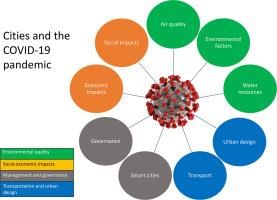 Why in News?
Why in News?
Recently, the world marked five years since the outbreak of the Covid-19 pandemic, which resulted in millions of deaths, unprecedented economic disruptions, and significant social challenges. Although much of the immediate crisis has passed, its lingering effects on global economies, policies, and societies continue to shape the world profoundly.
Key Takeaways
- The pandemic caused a sharp contraction in global GDP and significant shifts in economic policies.
- India's GDP growth rate dropped to -5.8% during 2020-21 but showed robust recovery afterward.
- Public debt surged globally, constraining fiscal flexibility.
- The pandemic led to an erosion of public trust in institutions and a rise in alternative work models.
Additional Details
- Economic Impact:
- India experienced a GDP contraction of -5.8% due to stringent lockdowns, compared to the pre-Covid average of 6.6%.
- Post-pandemic recovery saw growth rates of 9.7%, 7%, and 8.2% in the years 2021 to 2023.
- Global GDP contracted by 3.1% in 2020, with a reported shortfall of nearly USD 4.7 trillion from the original forecasts.
- Debt Explosion: Governments worldwide borrowed heavily during the pandemic, leading to the largest increase in public debt in two decades. This high debt level limits fiscal flexibility and affects sectors like health and education.
- Industrial Policies: The pandemic revealed vulnerabilities in global supply chains, prompting governments to introduce new policies aimed at enhancing self-sufficiency, such as the US CHIPS Act and India's Production-Linked Incentives.
- Social Dynamics: The Edelman Trust Barometer indicated a sharp decline in public trust in institutions post-pandemic, with a significant portion of the population feeling disconnected from elected officials.
- Changing Work Models: The pandemic popularized hybrid work, with 42% of Indian job seekers in 2024 prioritizing flexible hours and the rise of gig work enabling alternative income streams.
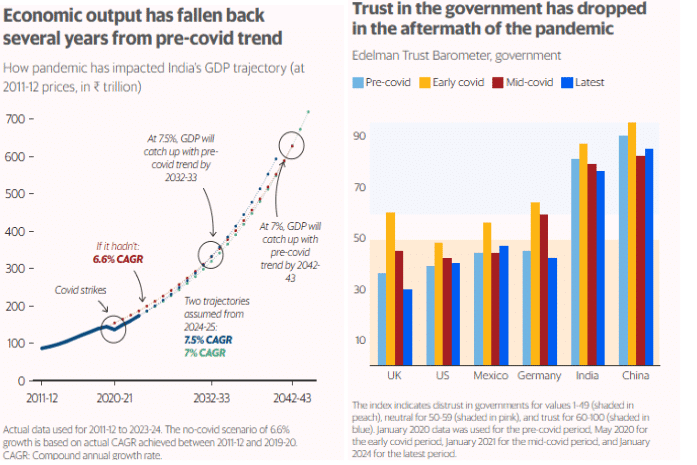
In conclusion, the Covid-19 pandemic has drastically altered economic trajectories, social trust, and work models. Moving forward, it is crucial to adopt strategies that foster economic recovery, enhance supply chain resilience, and improve public trust in governance.
Rising Drug Abuse Among Youth
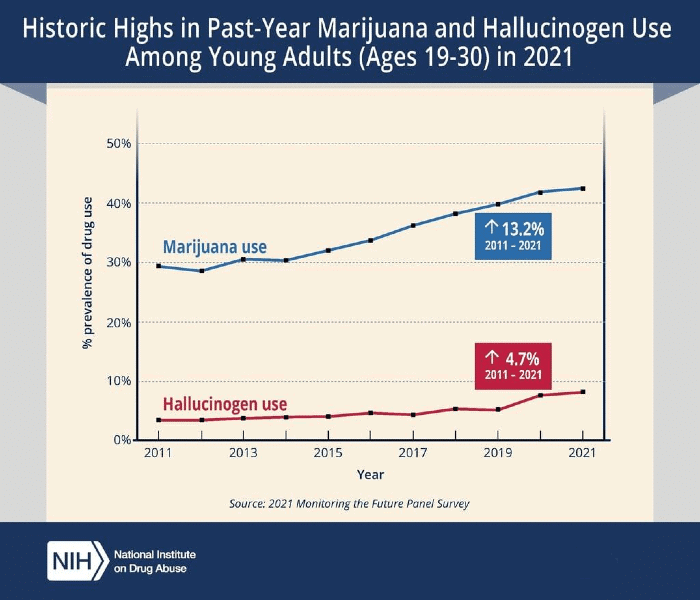
Why in News?
The Supreme Court of India has raised alarms over the increasing drug abuse among youth, labeling it a generational threat. This concern arose during a ruling that supported the National Investigation Agency's (NIA) investigation into a heroin smuggling case linked to Pakistan. The court called for immediate collective action from families, society, and government bodies to combat the escalating issue of drug abuse.
Key Takeaways
- The Supreme Court views rising drug abuse as a significant threat to the youth.
- Urgent action is needed from all sectors to address this growing problem.
Additional Details
- Global Drug Use: According to the World Drug Report 2024 by the United Nations Office on Drugs and Crime (UNODC), global drug use has reached 292 million people, representing a 20% increase over the last decade.
- Drug Preferences:The most commonly used drugs include:
- Cannabis: 228 million users
- Opioids: 60 million users
- Amphetamines: 30 million users
- Cocaine: 23 million users
- Ecstasy: 20 million users
- Emerging Threats: New synthetic opioids, particularly netizens, are becoming more potent than fentanyl and are a growing cause of overdose deaths, especially in wealthier nations.
- Treatment Gap: Only 1 in 11 individuals with drug use disorders, amounting to 64 million people, receive treatment; this rate is even lower for women.
Drug Prevalence in India
- Approximately 100 million people in India are affected by various narcotics.
- States like Uttar Pradesh, Maharashtra, and Punjab have reported the highest number of FIRs under the Narcotic Drugs and Psychotropic Substances Act (NDPS) from 2019 to 2021.
- Alcohol Use: About 16 crore individuals (14.6%) between the ages of 10 and 75 are current alcohol users; 5.2% are alcohol dependent.
- Cannabis Users: 3.1 crore people (2.8%) utilize cannabis, with 72 lakh (0.66%) facing cannabis-related issues.
- Opioid Use: 2.06% of the population uses opioids, with nearly 0.55% (60 lakh) requiring treatment.
- Sedative Abuse: 1.18 crore (1.08%) individuals use sedatives non-medically.
- Inhalant Abuse: 1.7% of children and adolescents abuse inhalants, a rate significantly higher than the 0.58% prevalence in adults.
- Injecting Drug Use: Approximately 8.5 lakh people in India are known to inject drugs.
Factors Contributing to Drug Abuse in India
- Peer Influence: Social dynamics encourage experimentation among youth, particularly in educational settings.
- Academic Stress and Mental Health Issues: High academic pressures lead some youth to use drugs as coping mechanisms.
- Cultural Norms and Media Influence: The glamorization of drug use in media fosters acceptance among young people.
- Socio-Economic Factors: Poverty and lack of resources contribute to higher rates of substance abuse as a form of escape.
- Family Environment: Dysfunctional family dynamics and parental substance abuse correlate with increased youth drug use.
- Legal System Loopholes: Organized crime syndicates exploit weaknesses in legal frameworks, facilitating drug trafficking.
- Easy Availability: The widespread availability of drugs, particularly in Punjab, has led to high rates of abuse.
- Fear of Strict Laws: Strict regulations can deter families from seeking help for drug-related issues.
Government Measures to Tackle Drug Abuse in India
- Legislative Measures:
- The Narcotic Drugs and Psychotropic Substances (NDPS) Act, 1985, regulates narcotics.
- The Drugs and Cosmetics Act, 1940, and the Prevention of Illicit Traffic in Narcotic Drugs and Psychotropic Substances (PITNDPS) Act, 1988, provide a legal framework for controlling drug trafficking.
- Institutional Measures:
- The Central Counter Terrorism Law Enforcement Agency tackles drug trafficking linked to national security.
- The National Narcotics Control Bureau (NCB) coordinates drug law enforcement efforts.
- Preventive and Rehabilitation Measures:
- The National Action Plan for Drug Demand Reduction (NAPDDR) aims to reduce drug demand through awareness and rehabilitation.
- Initiatives like Nasha Mukt Bharat Abhiyan focus on educating school children about the dangers of drugs.
To effectively combat drug abuse, India must strengthen existing laws and adopt a comprehensive national policy that emphasizes prevention, rehabilitation, and stringent enforcement. Multi-sectoral collaboration and community engagement are essential for creating a sustainable solution to this pressing issue.
Misuse of Indian Law
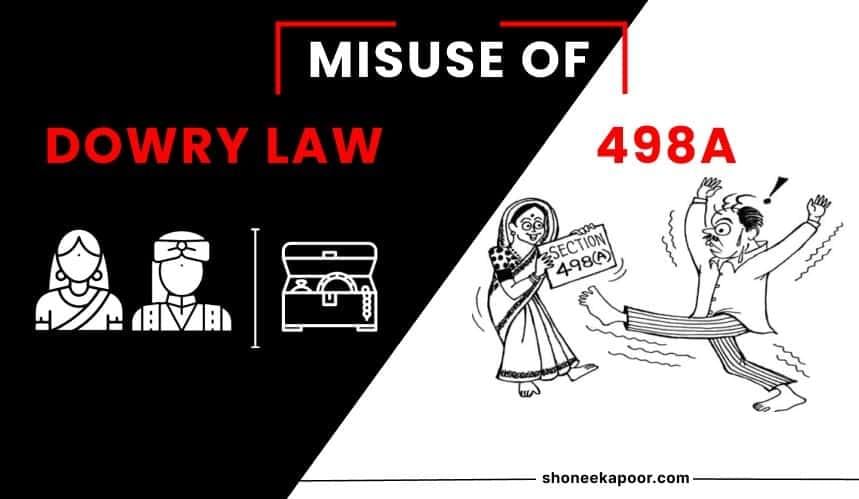 Why in News?
Why in News?
Recently, a Public Interest Litigation (PIL) was filed in the Supreme Court (SC) following the suicide of a techie in Bengaluru. The petition seeks intervention to review and reform dowry and domestic violence laws, claiming that these laws have been misused to settle unrelated disputes and to suppress the husband's family.
Key Takeaways
- The Dowry Prohibition Act, 1961 and Section 498A of the Indian Penal Code (now Bharatiya Nyaya Sanhita) are alleged to be misused.
- Legal provisions like Section 304B (Dowry Death) and Section 498A may lead to wrongful imprisonment based on unproven allegations.
- Men often face stigma and lack legal protections in cases of domestic violence and false accusations.
Additional Details
- Section 304B (Dowry Death): This section presumes that any unnatural death of a married woman is due to dowry demands, leading to severe penalties for husbands or relatives.
- Section 498A (Cruelty Against Women): This provision allows for up to three years of imprisonment and is non-bailable. It presumes guilt, making it easy for false accusations to arise.
- Section 375 (Rape): Only men are recognized as perpetrators, excluding male and transgender victims from legal protection.
- Section 354 (Assault to Outrage Modesty): This law protects women's modesty but lacks similar protections for men and transgender individuals.
- Maintenance Laws: Section 125 of the CrPC mandates that men provide financial support to their wives, parents, and children, often disregarding women's actual financial needs.
- Protection of Women from Domestic Violence Act, 2005: This act does not provide protections for men facing abuse from partners.
- Custody and Divorce Proceedings: Courts tend to favor mothers in custody cases, often marginalizing fathers despite their close relationships with children.
The impacts of false accusations can lead to significant psychological distress, social stigma, suppressed emotions, and increased rates of marital suicide among men. Financial burdens from legal fees and potential job losses further exacerbate these issues.
Judicial Stand on Indian Law
- Sakshi v Union of India (1999): The Supreme Court called for gender-neutral rape laws, leading to recommendations for replacing the term 'rape' with 'sexual assault.'
- Priya Patel v State of MP (2006): The court ruled that a woman could not be convicted of rape even if she actively participated in the crime.
- Sushil Kumar Sharma Case (2005): The Supreme Court acknowledged the potential for legal terrorism under Section 498A but upheld its constitutionality.
- Chandrabhan Case (1954): The Delhi HC noted that many complaints arise from trivial disputes and often harm children caught in those conflicts.
- Arnesh Kumar v State of Bihar (2014): The SC stressed caution in arrests under Section 498A due to its serious implications.
How to Achieve Gender-Neutrality in Indian Laws?
- Acknowledging Gender Bias: Recognizing that men can also be victims of domestic violence and harassment is crucial for legal reform.
- Sensitizing the Criminal Justice System: Training for judges and police on gender biases is necessary to promote fairness in legal proceedings.
- Revising Existing Laws: Adopting gender-neutral language ensures equal protection under the law for all genders.
- Institutions for Men’s Welfare: Establishing gender-neutral institutions can promote equal rights for all individuals.
- Sensitizing Society: Challenging stereotypes that dictate gender roles is essential for achieving true equality.
In conclusion, addressing the biases in Indian laws and implementing gender-neutral reforms are crucial steps towards achieving equality and justice for all individuals, regardless of gender.
|
38 videos|5288 docs|1117 tests
|
FAQs on Indian Society & Social Justice - 3 - Current Affairs & Hindu Analysis: Daily, Weekly & Monthly - UPSC
| 1. What is the GQ-RCP platform for HIV detection and how does it work? |  |
| 2. How did the COVID-19 pandemic affect HIV detection and treatment? |  |
| 3. What are the trends in drug abuse among youth during the COVID-19 pandemic? |  |
| 4. How is Indian law misused in the context of social justice? |  |
| 5. What measures can be taken to promote social justice in Indian society? |  |




















